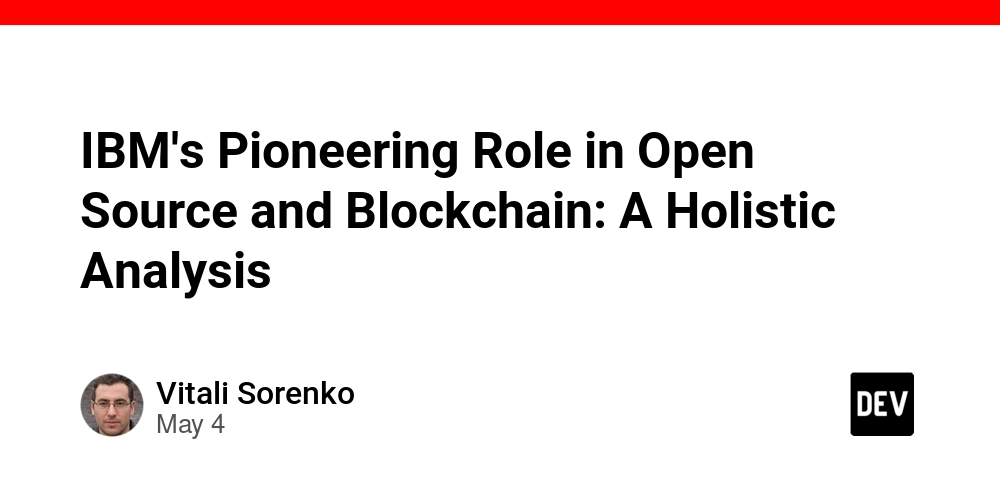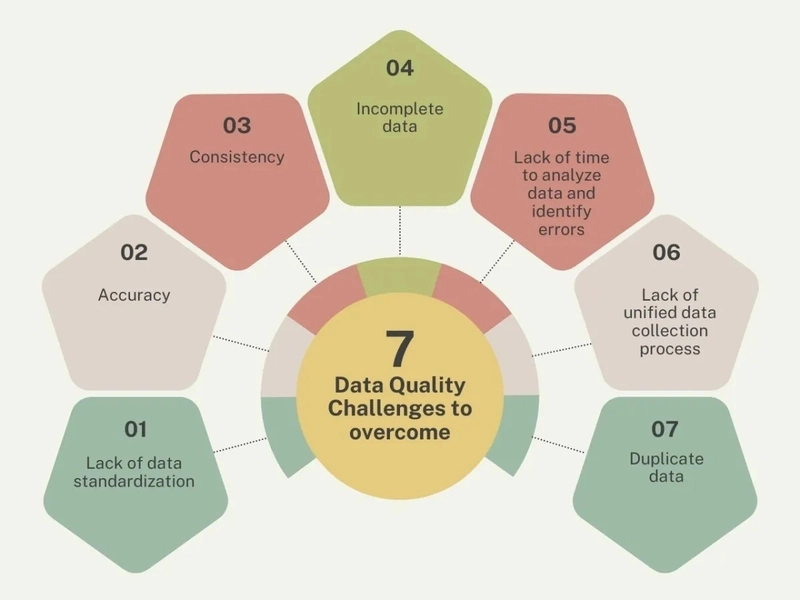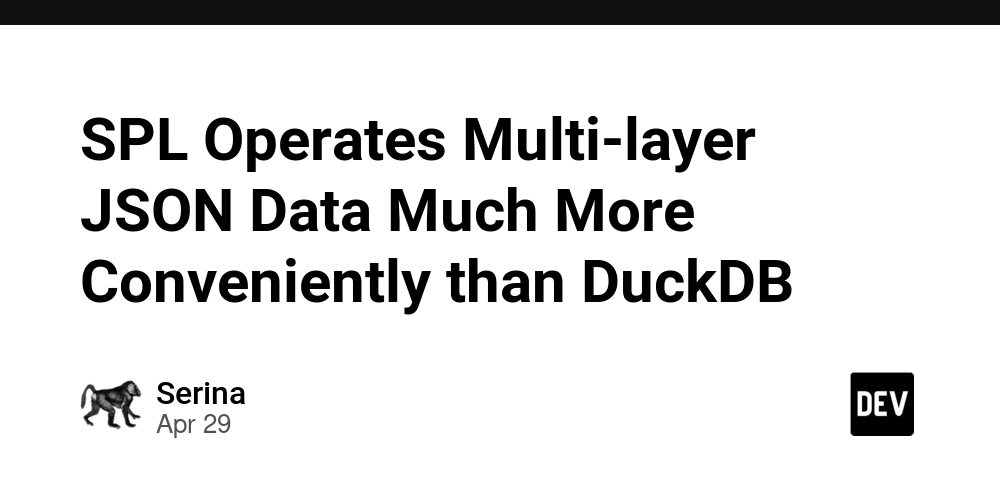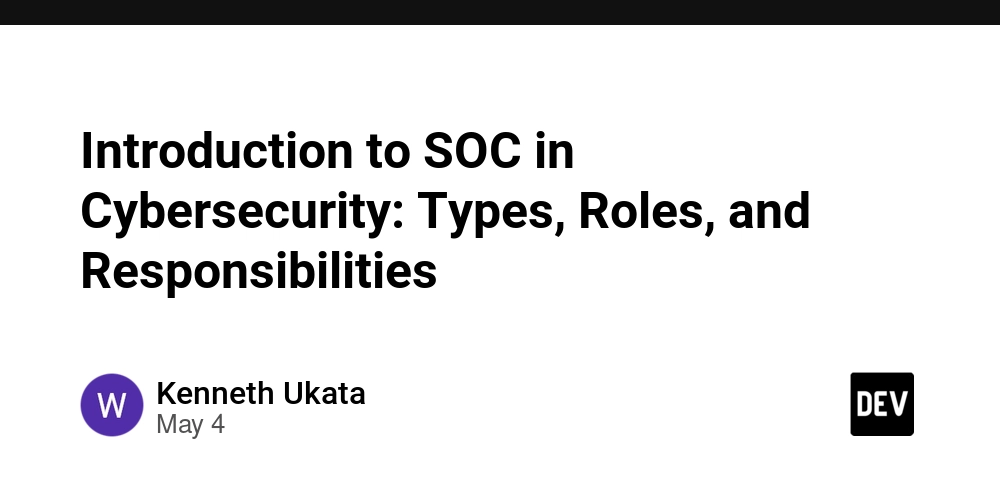IBM's Pioneering Role in Open Source and Blockchain: A Holistic Analysis
Abstract: This post explores IBM’s trailblazing journey in the open source and blockchain arenas. We delve into IBM’s historical investments—from its groundbreaking $1 billion Linux commitment and contributions to Apache projects to launching Eclipse and acquiring Red Hat. Additionally, the discussion covers IBM’s initiatives in blockchain technology, including Hyperledger Fabric, supply chain innovation with IBM Food Trust, and global financial transformations with IBM World Wire. Along the way, we examine core concepts, practical applications, challenges, and future outlooks surrounding open source and blockchain innovations, enriched with table comparisons, bullet lists, technical insights, and authoritative references. Introduction IBM has long been a beacon of innovation, shaping the way technology evolves. With significant investments in open source and blockchain, IBM has influenced digital ecosystems globally. Open source projects lead to collaboration and sustainable development, while blockchain supports transparency, security, and efficiency in multiple sectors. In this post, we investigate IBM's dual contributions to these innovative areas, exploring historical milestones, key projects, overlaps, practical use cases, and the challenges ahead. For more on IBM’s journey, check out IBM's Pioneering Role in Open Source and Blockchain. Background and Context Understanding IBM's impact requires tracing its roots in both open source and blockchain. Here is a brief history and context: Open Source Evolution: Open source software is a model of collaboration where the source code is publicly available. In 2000, IBM’s $1 billion investment in Linux marked a turning point, signaling that enterprise-grade operating systems could flourish under open source principles. IBM not only backed Linux but also contributed to projects under the Apache Software Foundation, which is central to big data analytics and web technologies. Blockchain Emergence: Blockchain technology arose as a decentralized solution to ensure data integrity and trust without intermediaries. IBM’s early involvement includes co-founding the Hyperledger Project, which leverages blockchain for secure, scalable applications across industries. Blockchain’s use in supply chains, financial services, and global trade demonstrates its groundbreaking potential. Ecosystem Synergies: The synergy between open source and blockchain is significant. Open source communities often drive blockchain innovation by openly sharing code, which in turn enhances transparency and interoperability—the very strengths of blockchain technology. Insights on their fusion can be found in Open Source Software and Blockchain Synergies. Core Concepts and Features Below, we explore key IBM initiatives, highlighting their features and the intersection of open source and blockchain technology. IBM and Open Source Embracing Linux: In 2000, IBM’s strategic decision to invest $1 billion in Linux demonstrated its commitment to an open source future. This initiative has paved the way for innovations in cloud computing and enterprise servers. IBM’s support for Linux is available in more detail on IBM Linux Resources. Contribution to Apache Projects: IBM played a significant role in advancing projects like Apache Hadoop and Apache Spark, tools fundamental in handling big data. These projects have transformed data analytics, enabling businesses to glean insights in near real-time. Launch of Eclipse: Launched in 2001, the Eclipse Integrated Development Environment (IDE) quickly established itself as a staple in the developer community. By open sourcing Eclipse, IBM fostered community-driven innovation that continues to inspire many software tools. Red Hat Acquisition: In 2019, IBM’s acquisition of Red Hat further consolidated its position in the open source arena. Red Hat’s deep expertise in Linux distributions, cloud solutions, and enterprise software enhances IBM’s capabilities and supports sustainable open source development. Learn more at the IBM Red Hat Complete Guide. Sustainability Through Tokenization: Initiatives such as Sustainability of Open Source Through Tokenization illustrate innovative funding models that reward community contributions and ensure project longevity. IBM and Blockchain Founding Hyperledger Fabric: IBM is a key founding member of the Hyperledger Project—a collaborative effort under the Linux Foundation that has developed scalable blockchain solutions like Hyperledger Fabric. This framework underpins many enterprise blockchain solutions. Innovative Supply Chain Solutions: IBM Food Trust is a blockchain-based solution that enhances transparency and traceability in food supply chains. By integrating blockchain across the food production and distribution network, IBM helps ensure that consumers receive safe, quality products. More details are available at IBM Food Trust. Global Trade with Tra

Abstract:
This post explores IBM’s trailblazing journey in the open source and blockchain arenas. We delve into IBM’s historical investments—from its groundbreaking $1 billion Linux commitment and contributions to Apache projects to launching Eclipse and acquiring Red Hat. Additionally, the discussion covers IBM’s initiatives in blockchain technology, including Hyperledger Fabric, supply chain innovation with IBM Food Trust, and global financial transformations with IBM World Wire. Along the way, we examine core concepts, practical applications, challenges, and future outlooks surrounding open source and blockchain innovations, enriched with table comparisons, bullet lists, technical insights, and authoritative references.
Introduction
IBM has long been a beacon of innovation, shaping the way technology evolves. With significant investments in open source and blockchain, IBM has influenced digital ecosystems globally. Open source projects lead to collaboration and sustainable development, while blockchain supports transparency, security, and efficiency in multiple sectors. In this post, we investigate IBM's dual contributions to these innovative areas, exploring historical milestones, key projects, overlaps, practical use cases, and the challenges ahead. For more on IBM’s journey, check out IBM's Pioneering Role in Open Source and Blockchain.
Background and Context
Understanding IBM's impact requires tracing its roots in both open source and blockchain. Here is a brief history and context:
Open Source Evolution:
Open source software is a model of collaboration where the source code is publicly available. In 2000, IBM’s $1 billion investment in Linux marked a turning point, signaling that enterprise-grade operating systems could flourish under open source principles. IBM not only backed Linux but also contributed to projects under the Apache Software Foundation, which is central to big data analytics and web technologies.Blockchain Emergence:
Blockchain technology arose as a decentralized solution to ensure data integrity and trust without intermediaries. IBM’s early involvement includes co-founding the Hyperledger Project, which leverages blockchain for secure, scalable applications across industries. Blockchain’s use in supply chains, financial services, and global trade demonstrates its groundbreaking potential.Ecosystem Synergies:
The synergy between open source and blockchain is significant. Open source communities often drive blockchain innovation by openly sharing code, which in turn enhances transparency and interoperability—the very strengths of blockchain technology. Insights on their fusion can be found in Open Source Software and Blockchain Synergies.
Core Concepts and Features
Below, we explore key IBM initiatives, highlighting their features and the intersection of open source and blockchain technology.
IBM and Open Source
Embracing Linux:
In 2000, IBM’s strategic decision to invest $1 billion in Linux demonstrated its commitment to an open source future. This initiative has paved the way for innovations in cloud computing and enterprise servers. IBM’s support for Linux is available in more detail on IBM Linux Resources.Contribution to Apache Projects:
IBM played a significant role in advancing projects like Apache Hadoop and Apache Spark, tools fundamental in handling big data. These projects have transformed data analytics, enabling businesses to glean insights in near real-time.Launch of Eclipse:
Launched in 2001, the Eclipse Integrated Development Environment (IDE) quickly established itself as a staple in the developer community. By open sourcing Eclipse, IBM fostered community-driven innovation that continues to inspire many software tools.Red Hat Acquisition:
In 2019, IBM’s acquisition of Red Hat further consolidated its position in the open source arena. Red Hat’s deep expertise in Linux distributions, cloud solutions, and enterprise software enhances IBM’s capabilities and supports sustainable open source development. Learn more at the IBM Red Hat Complete Guide.Sustainability Through Tokenization:
Initiatives such as Sustainability of Open Source Through Tokenization illustrate innovative funding models that reward community contributions and ensure project longevity.
IBM and Blockchain
Founding Hyperledger Fabric:
IBM is a key founding member of the Hyperledger Project—a collaborative effort under the Linux Foundation that has developed scalable blockchain solutions like Hyperledger Fabric. This framework underpins many enterprise blockchain solutions.Innovative Supply Chain Solutions:
IBM Food Trust is a blockchain-based solution that enhances transparency and traceability in food supply chains. By integrating blockchain across the food production and distribution network, IBM helps ensure that consumers receive safe, quality products. More details are available at IBM Food Trust.Global Trade with TradeLens:
In collaboration with Maersk, IBM launched TradeLens to streamline global shipping. TradeLens uses blockchain technology to improve transparency and efficiency in the shipping industry. Visit TradeLens for more information.Revolutionizing Banking with World Wire:
IBM's World Wire is a blockchain-based financial platform that facilitates real-time cross-border payments with enhanced security and reduced transaction costs. Find out more at Blockchain for Cross-Border Payments.Integration of AI and Cloud:
Beyond blockchain, IBM’s open source initiatives extend to AI with IBM Watson. By merging AI with blockchain, IBM is setting the stage for smarter, more secure and collaborative digital ecosystems.
Comparative Overview
The following table compares IBM’s major contributions in open source and blockchain domains to help illustrate the overlapping features and unique benefits:
| Aspect | IBM Open Source Contributions | IBM Blockchain Innovations |
|---|---|---|
| Key Investment | $1 Billion in Linux (2000) | Founding member of Hyperledger |
| Notable Projects | Apache Hadoop, Apache Spark, Eclipse | IBM Food Trust, TradeLens, World Wire |
| Acquisition | Red Hat Acquisition (2019) | Partnership with Maersk for TradeLens |
| Focus Areas | Enterprise solutions, cloud computing, collaborative development | Transparency, supply chain efficiency, real-time payments |
| Community Impact | Open source communities, developer empowerment | Enhanced security, decentralized applications |
Applications and Use Cases
Let us now explore practical applications that illustrate how IBM’s contributions are being leveraged in the digital landscape.
Use Case 1: Enterprise Cloud Solutions
- Open Source Role: Companies adopt Linux distributions supported by IBM’s open source ecosystem. Tools like Eclipse and Apache Spark fuel data-driven decision-making in cloud environments.
- Blockchain Synergy: By integrating open source blockchain frameworks such as Hyperledger Fabric, enterprises can secure and streamline operations. For example, blockchain-enabled supply chain management systems offer an auditable trail of transactions and product histories.
Use Case 2: Financial Services Transformation
- Open Source Role: IBM’s open source projects facilitate agile development and continuous integration in financial applications.
- Blockchain Synergy: Platforms such as IBM World Wire revolutionize cross-border payments by reducing fees and increasing transaction speeds, enabling global trade to become more efficient and secure.
Use Case 3: Supply Chain Transparency
- Open Source Role: Transparent, community-driven development fosters innovation in software solutions that are adaptable to real-world challenges.
- Blockchain Synergy: IBM Food Trust has been adopted by numerous stakeholders to ensure the traceability of food items from farm to table, improving food safety and consumer trust.
Challenges and Limitations
Despite the success stories, several challenges remain:
Technical Complexity:
Both open source and blockchain solutions can suffer from integration challenges. Complex system interactions may require diverse teams to troubleshoot and innovate continuously.Adoption Barriers:
Enterprises and governments might be hesitant to adopt new blockchain-based solutions due to regulatory uncertainties and legacy system dependencies.Security and Scalability:
Ensuring security against cyber attacks and scaling solutions for global usage is an ongoing challenge. For instance, different blockchain implementations may vary in transaction throughput and data privacy.Interoperability:
The integration of open source components in blockchain solutions often faces interoperability issues with proprietary systems. Developers must ensure compatibility across various platforms and environments.Funding and Sustainability:
Sustaining long-term open source and blockchain projects requires innovative funding models. Tokenization and community sponsorship, as described in Sustainability of Open Source Through Tokenization, are promising, yet not without hurdles.
Future Outlook and Innovations
Looking toward the future, several trends are likely to emerge:
Deeper AI Integration:
IBM is already spearheading initiatives that integrate AI with open source and blockchain. Technologies such as IBM Watson are expected to drive more intelligent, adaptive systems that improve decision-making processes.Ethical Technology Development:
With initiatives like Call for Code, IBM promotes ethical use of technology. This focus is anticipated to grow, foregrounding responsible innovation and social impact while ensuring transparency.Enhanced Interoperability and Standardization:
Efforts are underway to standardize blockchain protocols and open source licensing frameworks. This will ease integration challenges and support a more connected ecosystem. More insights into blockchain types can be found in Types of Blockchains.Hybrid Cloud and Blockchain Solutions:
The convergence of cloud computing, open source, and blockchain technologies will lead to robust, hybrid solutions that benefit from decentralization, security, and flexibility. IBM’s own hybrid model incorporating IBM Watson and blockchain is a strong indicator of this trend.Developer Community Empowerment:
Future developments will likely see increased emphasis on open collaboration. Platforms like GitHub Sponsors and innovative token-based funding models will ensure that open source projects receive sustained support. For more on community empowerment, check out Gitcoin: Pioneering Open Source Innovation.
Key Takeaways
Here is a bullet list summarizing the core points:
- IBM’s Investment in Linux: Demonstrated its early commitment to open source development.
- Significant Contributions to Apache & Eclipse: Cemented IBM’s influence in building enterprise software and developer tools.
- Red Hat Acquisition: Further solidified IBM’s strategic position in the open source ecosystem.
- Blockchain Initiatives: From Hyperledger Fabric to IBM Food Trust and IBM World Wire, IBM’s projects aim to revolutionize supply chain transparency and financial services.
- Interdisciplinary Integration: IBM’s future efforts integrate AI, blockchain, and cloud computing to build smarter, more ethical technological solutions.
Additional Insights from the Dev Community
The broader developer community also discusses the interplay of blockchain and open source. For example:
- In a deep dive into open source contributions, many developers echo IBM’s contributions as a catalyst for innovation.
- Other posts explore how Elon Musk’s open source licensing model and blockchain strategies are reshaping industries.
- There’s also significant discussion on pioneering initiatives such as Gitcoin’s role in funding open source projects, emphasizing the importance of community-supported development.
Summary
IBM’s role in transforming the digital landscape is undeniable. From the early days of investing in Linux, contributing to the Apache projects, launching Eclipse, and acquiring Red Hat, IBM has set the stage for sustained open source innovation. Parallelly, the company’s initiatives in blockchain—through the founding of the Hyperledger Project, pioneering supply chain solutions with IBM Food Trust, and reinventing cross-border financial transactions with IBM World Wire—underscore its commitment to secure, transparent, and efficient systems.
The fusion of open source and blockchain creates a fertile ground for new technologies that blend transparency, security, decentralization, and innovation. Though challenges remain in terms of technical complexity, interoperability, and sustainability, the future holds promising trends like enhanced AI integration, ethical technology development, and increased community participation. As these trends evolve, IBM’s strategic initiatives are set to pave the way for a robust, future-ready digital ecosystem.
In conclusion, IBM’s continued innovations ensure that both open source and blockchain remain at the forefront of technological progress, inspiring communities worldwide. For those interested in exploring the synergies further, additional details can be reviewed through the authoritative links provided in this post. Stay updated on further developments in digital innovation as IBM continues to drive remarkable change.
For more technical insights into blockchain and open source innovations, check out related IBM initiatives and community discussions. This post serves not only as a historical perspective but also as an invitation for developers and industry professionals to participate in shaping a more secure and transparent digital future.
By embracing continual learning, community collaboration, and cutting-edge innovation, IBM is helping craft a digital world where technology meets ethical standards and practical application—a future where challenges become stepping stones for unprecedented advancements.





































































































































































![[The AI Show Episode 145]: OpenAI Releases o3 and o4-mini, AI Is Causing “Quiet Layoffs,” Executive Order on Youth AI Education & GPT-4o’s Controversial Update](https://www.marketingaiinstitute.com/hubfs/ep%20145%20cover.png)




























































































































![[DEALS] Microsoft 365: 1-Year Subscription (Family/Up to 6 Users) (23% off) & Other Deals Up To 98% Off – Offers End Soon!](https://www.javacodegeeks.com/wp-content/uploads/2012/12/jcg-logo.jpg)




![From Art School Drop-out to Microsoft Engineer with Shashi Lo [Podcast #170]](https://cdn.hashnode.com/res/hashnode/image/upload/v1746203291209/439bf16b-c820-4fe8-b69e-94d80533b2df.png?#)




















![Re-designing a Git/development workflow with best practices [closed]](https://i.postimg.cc/tRvBYcrt/branching-example.jpg)




















































































(1).jpg?#)






























_Inge_Johnsson-Alamy.jpg?width=1280&auto=webp&quality=80&disable=upscale#)
































































































![What Google Messages features are rolling out [May 2025]](https://i0.wp.com/9to5google.com/wp-content/uploads/sites/4/2023/12/google-messages-name-cover.png?resize=1200%2C628&quality=82&strip=all&ssl=1)














![New Apple iPad mini 7 On Sale for $399! [Lowest Price Ever]](https://www.iclarified.com/images/news/96096/96096/96096-640.jpg)
![Apple to Split iPhone Launches Across Fall and Spring in Major Shakeup [Report]](https://www.iclarified.com/images/news/97211/97211/97211-640.jpg)
![Apple to Move Camera to Top Left, Hide Face ID Under Display in iPhone 18 Pro Redesign [Report]](https://www.iclarified.com/images/news/97212/97212/97212-640.jpg)
![Apple Developing Battery Case for iPhone 17 Air Amid Battery Life Concerns [Report]](https://www.iclarified.com/images/news/97208/97208/97208-640.jpg)







































































































